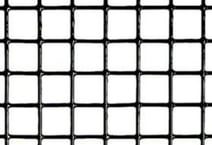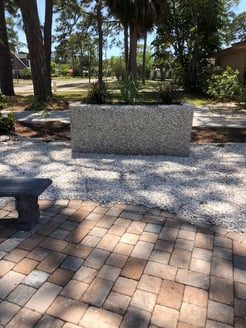Be Wary of Weld Points
You want to put up a wire mesh fence. Which one should you choose? There are so many different types of fencing materials available. The fence's function, the task you want it to perform, will be a large determining factor in the selection process. Factors that will impact the functioning of your fence:
- Wire gauge
- Mesh opening size
- Height
With few exceptions, wire fences have either a galvanized or a vinyl-coated finish. Usually, the vinyl is applied to the previously galvanized wire. The important question is whether the wire mesh under the vinyl coating is galvanized before it's welded, or if the mesh is galvanized after it is welded. Why is this important?
When
Hot-dipped
To get the highest quality protection from rust and corrosion a thick coating of PVC is applied to a wire mesh that has been galvanized after it has been welded. The wire fence material is hot-dipped--passed through a bath of molten zinc. The zinc flows over the entire surface of the mesh, thoroughly sealing the wires and the areas where the wires intersect. The PVC is applied last, giving the fence an extended life due to its double protection.
Double Protection
What factors make PVC coated galvanized after welded wire mesh the best vinyl coated wire mesh and fence?
- This attractive finish is pleasing to the eye
- Longest life--extended protection against rust and corrosion
- Reduced expense and labor of replacement
- Double protection--tightly bonded PVC coating on top of galvanized after weld
The next time you want to be sure that the wire you buy will last the longest, get vinyl coated wire mesh and fence that is galvanized after
Don't settle for less expensive inferior wire mesh products--this is false economizing. Get the products that will stand the test of time!
You do have a choice!



.jpeg?width=382&name=AdobeStock_207045510%20(1).jpeg)


















